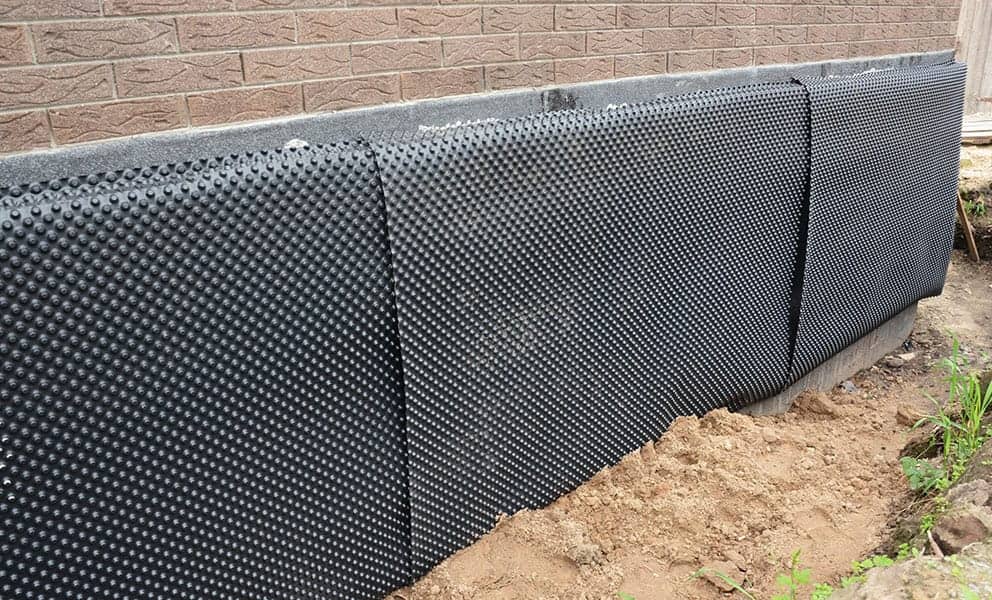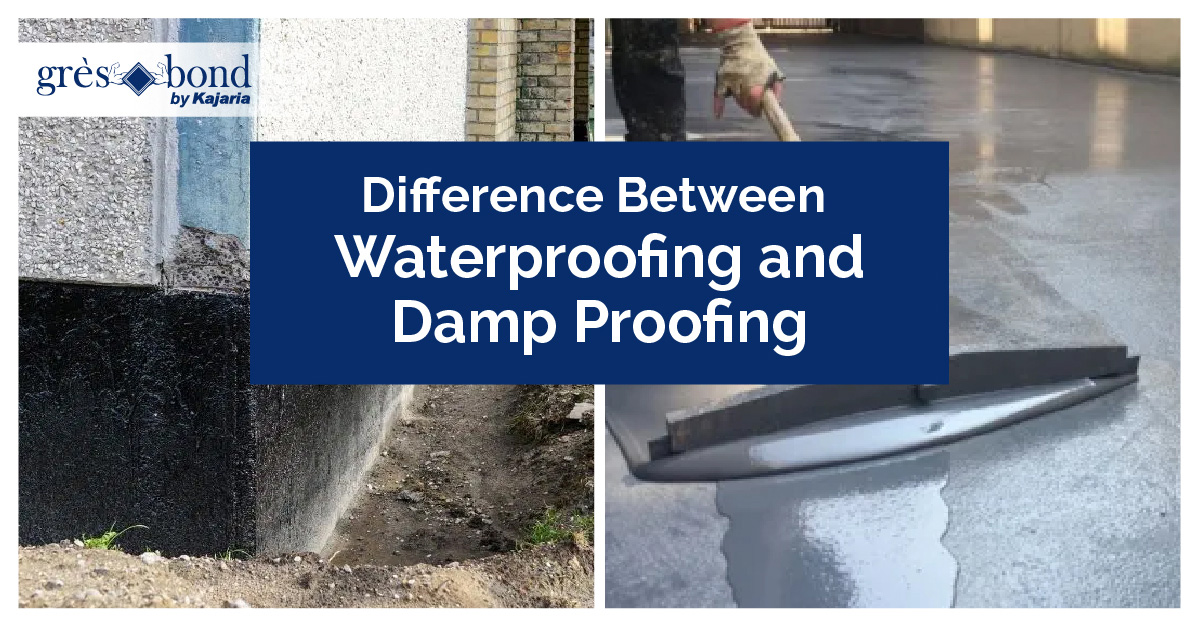Is your property at risk? Use this guide from damp specialist newcastle to find out
Is your property at risk? Use this guide from damp specialist newcastle to find out
Blog Article
Exploring the Various Strategies and Solutions for Effective Damp Proofing
Moisture in buildings poses considerable challenges to both architectural honesty and interior air high quality. Different techniques and services have arised to combat this prevalent problem. From conventional damp-proof membrane layers to cutting-edge chemical treatments, each method supplies unique advantages. Comprehending these alternatives is important for efficient wetness control. Nonetheless, choosing the ideal service depends upon certain building problems and demands, prompting additional exploration right into one of the most efficient wet proofing strategies offered.
Recognizing the Sources Of Dampness
Moisture can develop from numerous resources, comprehending these causes is vital for effective remediation. Typically, moisture stems from three main sources: rising damp, passing through moist, and condensation. Rising wet happens when groundwater takes a trip upwards through porous materials, such as brick or rock, commonly due to an absence of an effective obstacle (damp removal newcastle). Permeating wet is normally brought on by exterior aspects, consisting of roofing system leaks, defective gutters, or harmed wall surfaces, permitting water to infiltrate a building. Condensation, on the various other hand, results from excess wetness in the air, typically intensified by poor air flow and temperature level distinctions, resulting in water beads creating on surfaces. Recognizing these underlying problems is necessary, as each type of wetness requires a tailored method for remediation. Correct assessment aids in determining one of the most effective options, eventually securing the structural honesty of a structure and enhancing interior air top quality
Standard Damp-Proof Membrane Layers

Chemical Damp-Proofing Solutions
Chemical damp-proofing services supply a cutting-edge technique to stop moisture invasion in structures. These techniques normally include the application of fluid chemicals that permeate masonry and form a barrier versus increasing moist. Typically made use of chemicals consist of silanes, siloxanes, and other water-repellent representatives that react with surface materials to create a hydrophobic layer.The application procedure normally needs drilling holes into the wall surfaces, injecting the chemical service, and allowing it to heal. This approach is particularly helpful for older frameworks where typical damp-proof membrane layers might be unwise. In addition, chemical damp-proofing can be less turbulent and extra affordable than extensive remodelling projects.While effective, these options depend upon appropriate application and ecological conditions for peak performance. Routine upkeep and surveillance are vital to guarantee the durability of the damp-proofing treatment. Generally, chemical damp-proofing stands for a flexible choice for securing buildings against moisture-related damage
Cavity Wall Building And Construction Techniques
Tooth cavity wall surface building and construction methods provide numerous benefits, especially in wetness control and power effectiveness. By incorporating an air gap between two layers of stonework, these wall surfaces efficiently reduce water access while improving insulation. This combination not only secures structures from moisture but additionally adds to decreased energy consumption.
Benefits of Dental Caries Wall Surfaces
When taking into consideration reliable wet proofing methods, the benefits of tooth cavity wall surfaces attract attention prominently. Tooth cavity wall surfaces are composed of two different layers, creating an air space that properly lowers wetness penetration. This layout reduces the risk of moisture, as the external wall surface works as an obstacle against rain and water ingress. In addition, cavity walls enhance thermal insulation, which adds to power efficiency by minimizing warmth loss. They likewise provide audio insulation, aiding to create a quieter interior setting. The air void permits for ventilation, which assists in moisture control and lowers the probability of mold and mildew development. These advantages not only enhance the overall convenience of a building however also add to its long life and structural integrity.
Wetness Control Methods
Effective wetness control approaches are vital in cavity wall building to guarantee long-term defense against moisture. One main method includes the unification of weep openings, which facilitate water drain from the dental caries, avoiding accumulation. In addition, the use of breathable membranes can assist take care of dampness levels while permitting entraped vapor to leave. Correct placement of insulation is also crucial, as it needs to not block drainage courses. Guaranteeing that the external fallen leaves of the tooth cavity wall surface are constructed with water-resistant products enhances general durability. Normal maintenance checks are vital to identify any kind of obstructions or damage early, securing the structure's integrity. Ultimately, a mix of these strategies creates a durable defense versus wetness intrusion in dental caries wall surfaces.
Insulation and Power Efficiency
Insulation plays an important role in enhancing power effectiveness within tooth cavity wall building and construction. By incorporating protecting materials, these wall surfaces produce a thermal barrier that minimizes warm loss and minimizes power consumption. Efficient insulation not just helps keep a steady indoor temperature level however additionally mitigates the danger of wetness, as it stops condensation within the wall surface dental caries. Different techniques, such as using inflexible foam boards or mineral woollen, can be utilized to achieve suitable insulation performance. Additionally, correct setup is necessary to ensure that spaces and spaces are reduced, which can otherwise compromise energy performance. Ultimately, a well-insulated dental caries wall contributes greatly to total sustainability and decreases cooling and heating expenses for house owners.
Exterior Damp Proofing Techniques
External wet proofing methods are essential for safeguarding structures from wetness seepage. 2 effective strategies consist of the application of waterproof membrane layers and the setup of French drains pipes. These solutions assist minimize water accumulation and preserve the honesty of structures.
Waterproof Membrane Layer Application
While numerous approaches exist for stopping moisture ingress, the application of waterproof membranes remains a highly efficient outside moist proofing strategy. These membranes are generally made from materials such as polyethylene, rubber, or customized asphalt, supplying a robust obstacle against water penetration. The setup process involves applying the read more membrane to the external surface areas of wall surfaces or structures, making certain full insurance coverage to stop leakages. Appropriate adhesion and sealing at joints are critical to making best use of performance. Waterproof membrane layers can be applied in various kinds, including fluid coverings and sheet membrane layers, permitting adaptability based on the particular needs of the structure. This technique not only safeguards structures from dampness yet also enhances their longevity and architectural honesty.
French Drainpipe Installation
One effective technique for taking care of groundwater and preventing dampness build-up around a building's structure is the installment of a French drainpipe. This water drainage system is composed of a trench loaded with gravel and a perforated pipe that reroutes surface area water far from the structure. Appropriate installment needs cautious planning, ensuring that the drainpipe inclines far from the structure to promote excellent water circulation. In addition, the area of the drainpipe is essential; it must be positioned in areas prone to merging or excess dampness. Regular upkeep, consisting of clearing debris from the crushed rock and making certain the pipe remains unblocked, is important for long-lasting performance. Ultimately, a well-installed French drain can considerably decrease the threat of water-related issues in basements and structures.
Interior Waterproofing Approaches
Interior waterproofing approaches are essential for securing a building's interior from moisture infiltration and potential water damage. These methods typically involve the application of customized products and methods made to produce a dampness barrier within the framework. One usual method is using water resistant coatings or sealants on walls and floors, which protect against dampness from permeating surfaces.Additionally, mounting indoor drainage systems, such as sump pumps, can successfully handle water buildup in basements and creep rooms. One more method entails making use of vapor obstacles, which are mounted to prevent dampness motion from the ground into living spaces.Moreover, addressing any type of splits or gaps in walls or structures with proper sealers assures a detailed defense against water intrusion. By applying these interior waterproofing methods, home owners can significantly reduce the threat of mold growth, architectural damage, and various other moisture-related concerns. Correct execution of these methods is important for long-term protection and structure honesty.
Regular Maintenance and Examination Practices
Regular upkeep and examination techniques are essential for assuring the lasting efficiency of moist proofing remedies in any structure. Regular checks enable homeowner to identify early signs of moisture invasion, such as peeling off paint, mold and mildew growth, and moldy odors. These signs can signify underlying problems that require immediate attention.Inspections ought to be carried out a minimum of yearly, concentrating on susceptible areas like cellars, crawl areas, and exterior walls. Throughout these analyses, homeowner must examine sealers, drain systems, and ventilation to verify they function correctly.Additionally, maintaining downspouts and rain gutters is necessary, as blocked systems can result in water build-up near the structure. Applying a routine maintenance timetable, along with timely repairs, can substantially prolong the life-span of moist proofing measures and protect the architectural stability of the structure. Positive measures ultimately add to the overall health and wellness of the living setting.
Regularly Asked Concerns
How Much Time Does Damp Proofing Commonly Last?
The duration of wet proofing effectiveness differs, usually lasting in between 20 to half a century. Aspects such as application quality, environmental problems, and upkeep practices significantly influence the durability of the damp proofing therapy.

Can I Damp Evidence My Home Myself?
The individual contemplated the expediency of DIY damp proofing. With proper research and the best products, it is possible. However, they additionally acknowledged the value of expert guidance to assure durable performance and stop future issues.
What Are the Indicators of Ineffective Damp Proofing?
Indications of inadequate moist proofing include consistent musty odors, noticeable mold and mildew development, peeling paint, damp spots on wall surfaces, and timber degeneration - damp removal newcastle. Home owners should resolve these problems without delay to protect against more damage and wellness problems
Does Damp Proofing Affect Indoor Air Quality?

Just How Much Does Expert Damp Proofing Price?
Expert damp proofing costs vary significantly, generally varying from $1,000 to $5,000 depending on the residential property's size, the degree of the moist problem, and selected methods. Each scenario requires a tailored analysis for exact rates. Commonly, moisture originates from three main resources: rising wet, permeating wet, and condensation. When thinking about efficient wet proofing approaches, the benefits of dental caries wall surfaces stand out prominently. Outside damp proofing techniques are essential for securing frameworks from wetness seepage. While different techniques exist for protecting against dampness ingress, the application of waterproof membranes remains an extremely efficient exterior moist proofing strategy. Signs of ineffective wet proofing consist of persistent moldy odors, visible mold growth, peeling paint, damp spots on wall surfaces, and wood decay.
Report this page